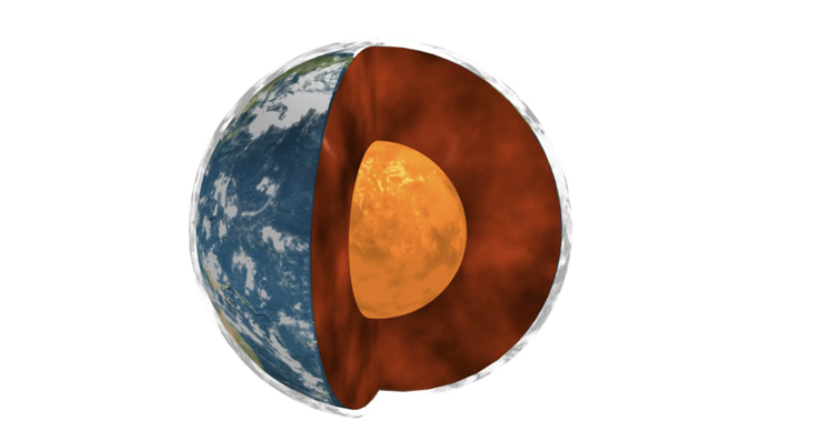
What is Happening at the Earth’s Core
An intriguing transformation is occurring deep within our planet. Last year, scientists suggested that the Earth’s core had recently ceased its rotation and then commenced rotating in the opposite direction to the overlying layers, a change potentially recurring approximately every 35 years.
Another study analysing decades of earthquake data reveals that our planet’s core has been rotating more slowly than the upper layers – the mantle and crust – for over a decade. This finding also provides a logical explanation for last year’s controversial view.
Geophysicist John Vidale of the University of Southern California and his team analysed seismic data from earthquakes in the South Sandwich Islands near Antarctica between 1991 and 2023. They particularly focused on “repeating” earthquakes occurring in the same location at different times. Some seismic waves from these earthquakes pass through the inner core and reach the far side of the planet, where they are recorded as waveforms. If the inner core rotates independently of the other layers, seismic waves pass through different parts of the inner core. Since not all parts of the inner core have the same structure, they generate different waveforms. However, if the inner core rotates in the opposite direction, as proposed in 2023, identical waveforms are seen before and after the onset of reverse rotation. Vidale and his team searched for such identical waveforms and found 25 matches from the 200 samples they compared. According to their data, the inner core began moving in the opposite direction to the mantle around 2008 and has been rotating at less than half its previous speed.
The inner core is rotating in the same direction as all the other layers. To clarify the situation, consider this analogy: imagine you are standing on the pavement watching two cars on the road moving in the same direction. One car is moving faster. To you, both cars are moving in the same direction, but for a person in the faster car, the other car appears to be moving away in the opposite direction. The layer we live on, the Earth’s crust, is that fast-moving vehicle. As the inner core slows down, it seems to be moving away from us – in the other direction.
According to Vidale, the cause of this slowdown is the mantle, which constitutes about 70% of the planet’s mass and influences the inner core with its gravity. Dense regions of the mantle may be disrupting the oscillation of the inner core.
These findings do not resolve the debate among scientists. Opinions differ regarding the periods over which the inner core’s rotation rate fluctuates. Some believe it oscillates every six years, others every 20-30 years, and according to the 2023 study and Vidale, every 70 years. If they are correct, the core is close to accelerating again. More research and data are needed to clarify this further.
REFERENCES
- 1. https://www.sciencenews.org/article/earths-inner-core-has-weird-rotation
- 2. https://www.sciencenews.org/article/earth-inner-core-reverse-rotation
- 3. https://www.nature.com/articles/s41586-024-07536-4
